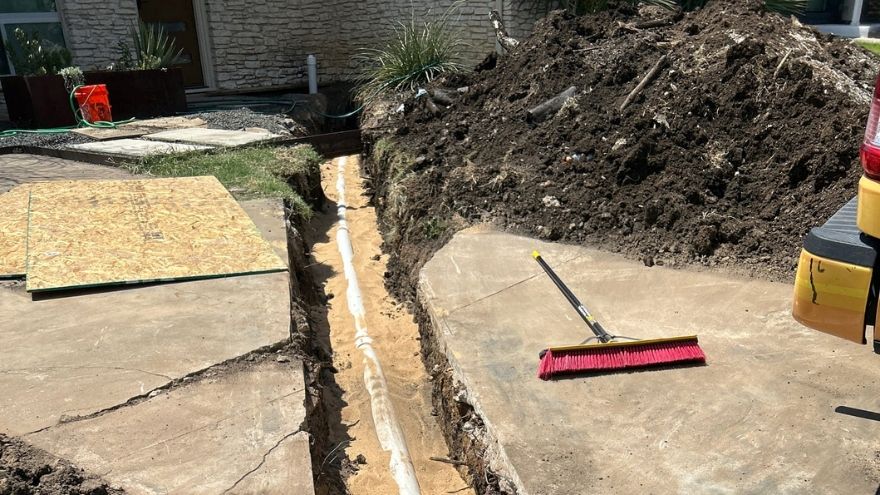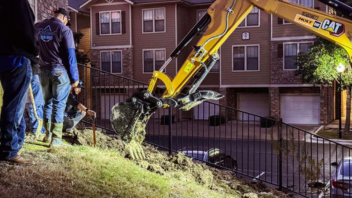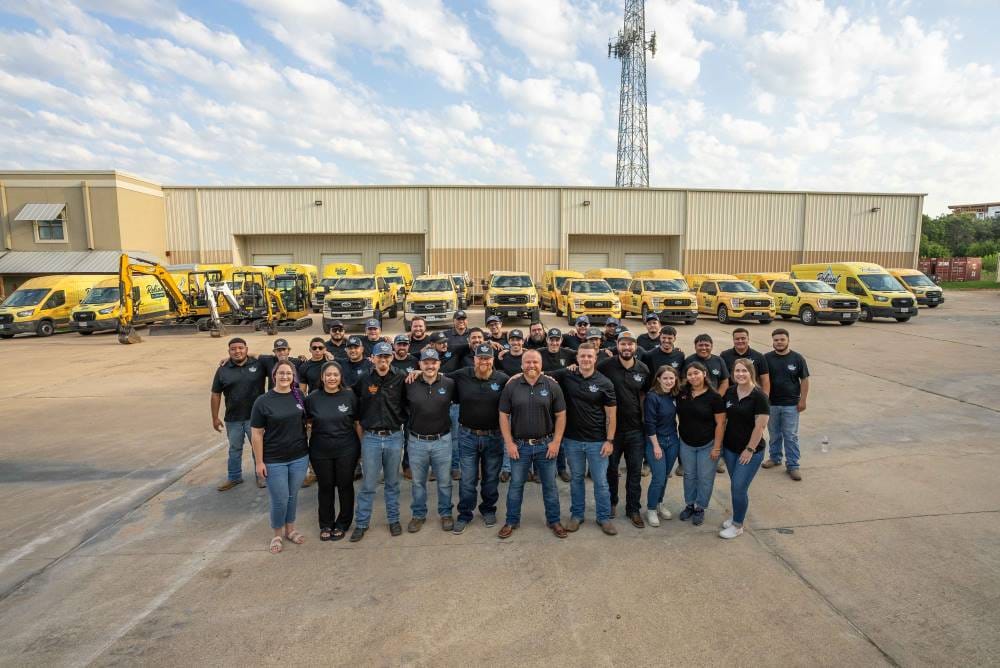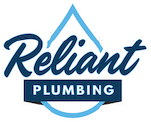Epoxy Pipe Lining vs Repiping
Table of contents
- What Is Epoxy Pipe Lining / Trenchless Pipe Repair?
- Epoxy Pipe Lining: The Step-By-Step Process
- Typical Use Cases & Limitations
- What Is Repiping / Full Sewer Replacement?
- Typical Use Cases & When It’s Necessary
- Repiping Process Overview
- Side-By-Side Comparison: Epoxy Lining vs Repiping
- Cost Considerations & Factors Influencing Pricing
- So What’s Next?
It’s a normal day and you’re walking through your house when you start to smell an awful stench. You search the home looking for what is causing this awful smell when you realize it’s coming from your drains. Your kids come running inside and tell you there’s a big puddle in the yard. It all adds up to one thing: a break in your sewer.
Many homeowners dread how messy and expensive pipe repair can be. The worry of a torn up yard, a wildly expensive replacement, and all that comes with it can weigh you down. The decision of what kind of repair or replacement you should choose is just one more thing you have to consider. Should you repipe your system or should you use epoxy pipe lining? We can help you decide.
In this article, we’ll break down what each approach involves, their pros and cons, costs, installation process, and how to decide which is best for your situation.
What Is Epoxy Pipe Lining / Trenchless Pipe Repair?
Epoxy pipe lining—sometimes called cured-in-place pipe (CIPP)—is a modern, trenchless method of repairing damaged sewer or drain lines without having to dig up your yard, driveway, or flooring. Instead of replacing the old pipe entirely, this technique creates a brand-new, seamless “pipe within a pipe.”
Here’s how it works:
- A flexible liner saturated with liquid epoxy resin is inserted into your existing sewer line.
- Once in place, the liner is inflated so that it presses against the interior walls of the pipe. As the epoxy cures and hardens, it bonds tightly to the pipe’s surface, sealing cracks, restoring strength, and preventing leaks or root intrusion.
- The result is a smooth, durable new pipe lining that can extend the lifespan of your plumbing system for decades.
Because this process requires only a few small access points, epoxy lining is considered a trenchless repair. That means far less disruption compared to traditional sewer replacement—no major excavation, no tearing up landscaping, and minimal downtime for your household.
This method is especially effective for homeowners dealing with aging pipes, corrosion, small cracks, or recurring blockages. While it’s not always the right solution for severely collapsed or misaligned pipes, epoxy lining is often a cost-effective and efficient alternative to full repiping when the structure of the existing line is still intact.
Epoxy Pipe Lining: The Step-By-Step Process

Epoxy pipe lining might sound high-tech, but the process is straightforward when handled by trained professionals. Here’s what typically happens during a trenchless repair:
- Camera Inspection
A specialized sewer camera is run through your line to locate cracks, root intrusion, corrosion, or other damage. This step also helps determine if epoxy lining is a suitable solution. - Cleaning & Preparation
Before any liner goes in, the existing pipe must be thoroughly cleaned. Plumbers may use hydro-jetting or mechanical tools to clear away debris, scale buildup, or roots. A smooth, clean interior ensures the epoxy bonds properly. - Installing the Liner
A flexible liner, saturated with liquid epoxy, is inserted into the damaged pipe. Depending on the situation, the liner may be pulled through or inverted using air or water pressure. - Inflation & Curing
Once the liner is in place, it’s inflated so the epoxy resin presses firmly against the pipe walls. The curing process begins, hardening the resin into a tough, structural barrier. Curing can be accelerated with hot water, steam, or UV light. - Final Inspection
After the epoxy has hardened, technicians perform another camera inspection. This confirms the liner is smooth, seamless, and free of wrinkles or gaps—essentially forming a brand-new pipe inside the old one.
The entire process can often be completed in one or two days, leaving homeowners with restored pipes, minimal property disruption, and peace of mind that their sewer system is back to working like new.
Typical Use Cases & Limitations

Epoxy pipe lining is a powerful tool, but it isn’t a one-size-fits-all solution. It works best when the existing pipe is still structurally sound and the damage is limited to cracks, leaks, or areas where roots have found their way inside. Here are some common situations where epoxy lining is an excellent option:
- Cracked or Leaking Pipes – Small cracks and pinhole leaks can be sealed from the inside, preventing further water loss or soil infiltration.
- Root Intrusion – If tree roots have penetrated your sewer line, epoxy lining can stop them from coming back by creating a smooth, sealed barrier.
- Corroded or Rusted Pipes – Lining is especially helpful in cast iron or metal pipes where corrosion has caused thinning walls or rough surfaces.
- Localized Damage – When only certain sections of the line are compromised, lining allows for targeted repairs without replacing the entire system.
That said, epoxy lining does have its limitations. It may not be the right solution if:
- Pipes Are Collapsed or Severely Offset – If the existing line has collapsed, shifted, or is misaligned, a liner cannot be installed effectively.
- Extensive System Deterioration – When large portions of the sewer system are compromised, a full replacement or repipe is often more reliable in the long run.
- Access Points Are Limited – Some properties don’t allow enough entry space for equipment, which may make trenchless methods difficult.
In short, epoxy pipe lining is best thought of as a minimally invasive repair method for pipes that still have “good bones.” If the structure has failed entirely, repiping or sewer replacement is the better long-term investment.
What Is Repiping / Full Sewer Replacement?

Repiping or sewer replacement is the traditional method of fixing severely damaged plumbing systems. Instead of creating a new lining inside the old pipe, this approach involves removing the failing line and installing brand-new piping in its place. Depending on the issue, it may be a targeted sewer line replacement or a whole-house repipe.
For water supply systems, repiping typically means replacing old galvanized, copper, or Kitec pipes with modern materials like PEX or copper that meet today’s plumbing standards. For sewer systems, replacement often requires excavation to access the existing line, removing the damaged sections, and installing new PVC or ABS piping.
While this method is more invasive than epoxy lining, it offers the benefit of a completely fresh start. Because the old, compromised pipe is taken out of service entirely, homeowners gain peace of mind knowing their system is built from the ground up to handle decades of use. With proper installation, new piping can last anywhere from 50 to 100 years, depending on the material.
Repiping and sewer replacement are generally recommended when pipes are beyond repair—such as those that have collapsed, corroded throughout, or been damaged in multiple places. Though it requires more time, labor, and property restoration, it’s often the most reliable long-term solution for homes with failing plumbing infrastructure.
Typical Use Cases & When It’s Necessary

Repiping or sewer replacement isn’t usually the first option—it’s the solution when smaller repairs or trenchless lining simply won’t cut it. Here are the most common scenarios where full replacement is the best choice:
- Severely Corroded or Aged Pipes
Cast iron, galvanized steel, or even copper pipes degrade over time naturally. Once corrosion is spread far enough throughout the system, patching or lining can’t restore it. Replacement ensures the entire system is structurally sound. - Collapsed or Bellied Sewer Lines
If the pipe has completely collapsed or sagged (creating a “belly” where waste collects), lining won’t work. Replacement is the only way to restore proper flow and prevent ongoing backups. - Persistent Sewer Backups
If clogs and backups keep returning even after cleanings or spot repairs, it’s often a sign the pipe walls are too compromised to function properly. - Home Renovations or Additions
Major remodeling projects are an opportunity to repipe, ensuring the plumbing can handle new fixtures or higher use without surprise failures.
While repiping and sewer replacement are larger investments up front, they eliminate recurring repair costs and restore full reliability to your plumbing system—making them the smarter long-term option in many cases.
Repiping Process Overview

Repiping or sewer replacement is a bigger job than trenchless lining, but knowing what to expect can take away some of the stress. Here’s how the process typically works:
- Initial Inspection & Planning
A licensed plumber performs a camera inspection and evaluates the system. This helps map out the location of all pipes, determine the extent of damage, and decide on the best replacement materials. - Permitting & Preparation
Because replacement is a major project, permits are usually required. Your plumbing team will handle the paperwork and ensure the work complies with local building codes. - Access & Excavation
For sewer replacement, trenches or access points are dug outdoors to expose the damaged line. - Removing Old Pipes
Outdated or broken piping is carefully removed and disposed of. This step prevents further leaks or contamination from deteriorating materials. - Installing New Pipes
Fresh piping is installed—PVC or ABS. Proper grading and secure joints are critical to ensure smooth flow and durability. - Testing & Inspection
Once installed, the system is pressure-tested and inspected to confirm everything is watertight and functioning correctly. A city inspector may also sign off before restoration begins. - Restoration & Cleanup
Access points are sealed and outdoor trenches are backfilled. Professional crews work to leave your property as close to its original condition as possible.
The full timeline can vary: a small repipe might take just a few days, while a complete sewer line replacement with excavation could take a week or more. The benefit is long-term reliability—you’ll know your plumbing system has been completely renewed from the ground up.
Side-By-Side Comparison: Epoxy Lining vs Repiping
| Feature | Epoxy Pipe Lining (Trenchless) | Repiping/Sewer Replacement |
| Disruption To Property | Minimal digging—often just one or two small access points. Landscaping, driveways, and flooring usually remain intact. | Significant disruption. Excavation and wall openings are often required, and restoration work may follow. |
| Speed of Installation | Fast—many projects can be completed in just one day. | Longer—can take several days to a week or more, depending on pipe length and accessibility. |
| Cost | Generally lower overall, especially since it avoids costly restoration of landscaping or hardscapes. | Higher due to labor, excavation, permits, and restoration work. |
| Best For | Pipes with cracks, corrosion, or small leaks where the structure is still intact. | Collapsed, bellied, or extensively deteriorated pipes; systems with widespread failures. |
| Longevity | Creates a seamless new lining inside the old pipe, adding decades of service life. | Provides a brand-new system with a lifespan of 50–100 years (depending on materials). |
| Warranty Options | Often comes with strong warranties on the lining material and workmanship. | Long-term warranties available, especially since the entire pipe system is replaced. |
| Restoration Needs | Minimal—no major landscaping or interior repairs needed. | Moderate to extensive—yards, driveways, or floors may need repair afterward. |
| Risks/Limitations | Cannot fix collapsed or misaligned pipes. Not effective for systems with widespread deterioration. | Higher upfront cost and property disruption, but provides complete peace of mind. |
Bottom Line:
- Epoxy lining is best when the pipe structure is still sound and you want a fast, non-invasive, cost-effective repair.
- Repiping or sewer replacement is the right choice when pipes are too far gone—collapsed, severely corroded, or made from outdated materials.
Cost Considerations & Factors Influencing Pricing

When deciding between epoxy pipe lining and repiping, cost is often the biggest factor homeowners want to understand. Both solutions represent an investment in your home, but the price can vary widely depending on your situation.
Epoxy Pipe Lining Costs
- Typically priced per foot of pipe lined.
- Costs are generally lower than full replacement, especially since you avoid the expense of tearing up and restoring landscaping, driveways, or flooring.
- Many trenchless projects can be completed in a single day, which helps keep labor costs down.
Repiping / Sewer Replacement Costs
- More expensive due to excavation, labor hours, permits, and the restoration required after digging.
- A whole-home repipe can range anywhere from $6,500 to $35,000, depending on the size of the home and materials used.
- Sewer replacement projects vary based on depth, length, and location of the line, as well as how much concrete, landscaping, or flooring must be restored afterward.
Key Factors That Influence Price
- Pipe Length & Diameter – Longer or larger pipes require more material and labor.
- Pipe Material – PEX is generally less expensive than copper; PVC or ABS are common choices for sewers.
- Accessibility – Hard-to-reach areas (under slabs, behind walls, or deep underground) add complexity.
- Soil & Site Conditions – Rocky soil, tree roots, or difficult terrain can increase labor costs.
- Damage Severity – A single cracked section may be relined affordably, but multiple collapsed sections almost always require replacement.
- Permits & Inspections – Required by most cities, and costs vary by jurisdiction.
- Restoration Work – Repairing walls, driveways, or landscaping after the plumbing work can significantly affect the final bill.
Bottom Line:
- Epoxy lining often provides the more budget-friendly solution when your pipes are still structurally intact.
- Repiping or replacement carries a higher upfront cost but eliminates future issues and can be the smarter financial choice for systems at the end of their lifespan.
So What’s Next?

When it comes to repairing failing pipes, there’s no one-size-fits-all solution. Epoxy pipe lining offers homeowners a fast, trenchless option that seals cracks, stops leaks, and extends the life of existing pipes with minimal disruption. On the other hand, sewer replacement provides a complete overhaul—ideal for systems that are too corroded, collapsed, or outdated for lining to work.
The right choice often comes down to the condition of your current system, how much disruption you can tolerate, and your long-term goals for your home. While epoxy lining can save you time and money in the short term, full replacement may be the smarter investment if your pipes are nearing the end of their lifespan.
At Reliant Plumbing, we start with a thorough camera inspection to give you a clear picture of your plumbing system’s health. From there, our experts will walk you through your options and help you choose the solution that makes the most sense for your home and budget.
Ready to find out whether epoxy pipe lining or repiping is right for you? Contact Reliant Plumbing today to schedule an inspection and get professional recommendations tailored to your home.
